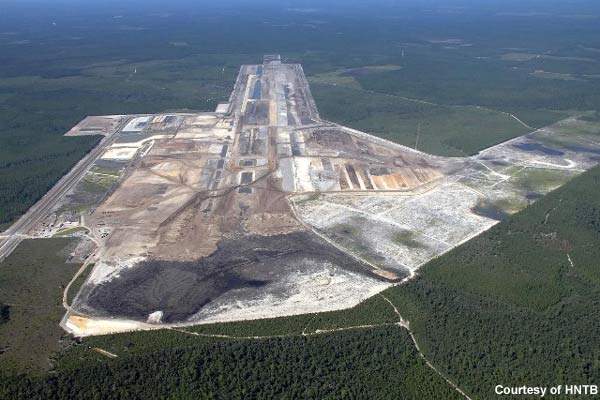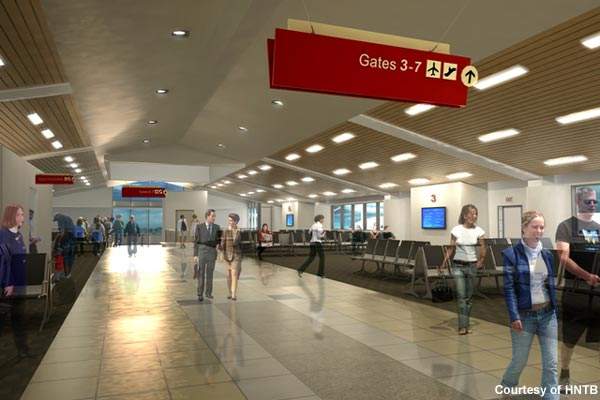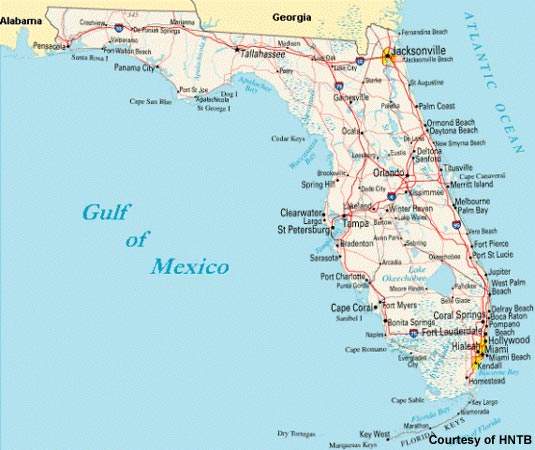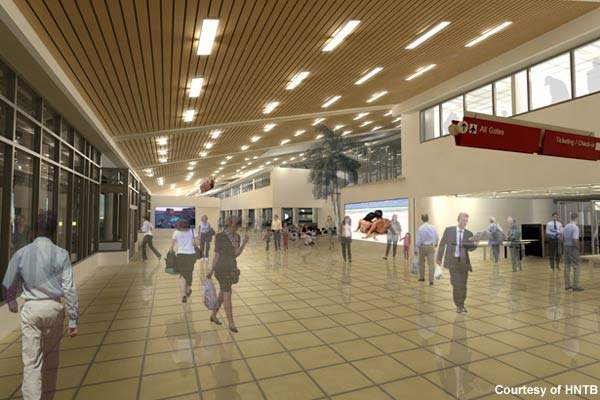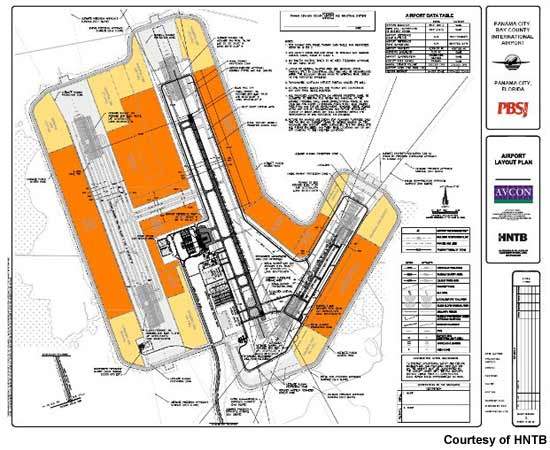The Panama City-Bay County International Airport, now known as Northwest Florida Beaches International Airport, is situated around 6km from Panama City in the state of Florida. The 745-acre airport has two runways, the 14/32 at around 6,000ft and the 5/23 at 4,900ft and a 55,500ft² terminal building with six gates (two jet bridges).
Owned by the Panama City-Bay County Airport Authority the airport has been considering expansion plans since the 1980s. The 14/32 runway at the airport has some problems in that it cannot be easily lengthened to accommodate full-sized jets because this would infringe upon protected land (St Andrews Bay (Goose Bayou) has a protected sea grass species) and also the runway is inside the hurricane belt, being flooded during certain times of the season since it is only 6ft above sea level (the other end of the runway is a dense residential area). Finally the safety zones for the 14/32 runway are not up to specification (a waiver being in place until 2015) and they need to be increased.
Faced with these problems the airport authority and the Federal Aviation Authority (FAA) considered alternatives in the 1990s and decided to relocate and build a new airport. The airport is expecting to host 600,000 passengers a year by 2020.
As of 1 October 2009, the construction of the new airport was almost 92% complete. The new airport was opened in May 2010.
On 10 November 2009, the airport’s name was changed to Northwest Florida Beaches International.
New airport site
The site chosen for the new airport is about eight miles from the original airport on 1,600 acres of a 4,000-acre site surrounded by protected woodland (in the 75,000-acre West Bay Area Sector). The site was donated to the airport by the Jacksonville Florida developer, The St Joe Company (FAA completed a site selection study in 2001). The new airport site is outside of tidal surge zones and hurricane danger areas and so will not have the same runway flooding problems as the old airport.
The new airport includes an 8,400ft×150ft runway (which will be extended to 12,000ft later) and also a 5,000ft×100ft crosswind runway along with a 125,000ft² seven-gate terminal building (Transportation Security Administration passed the terminal design in April 2006).
A decision over whether to build a $17m crosswind runway has still not been made.
Other buildings at the airport will be an air traffic control tower, rental car facilities, public safety building, maintenance facility, utility building and an air cargo building.
Environmental and permit agreements
Environmentalists filed six suits against the development but were assuaged by an undertaking from the airport authority supported by the Florida Department of Environmental Protection (FDEP) to create a 40,000-acre (60-square-mile) conservation area around West Bay (9,609 acres of this were provided by the St Joe Company).
The West Bay Preservation Area includes 33 miles of untouched shoreline and 44 miles of creeks and tributaries.
The plans were approved by Bay County and the State of Florida in 2002 and specific plans for the area were approved in 2003. Following this agreement the FAA issued a final environmental impact statement in May 2006 and a record of decision for the move in September 2006. The US Army Corp of Engineers (USACE) issued their 404 permit in August 2007 allowing the construction to begin.
Panama City-Bay finance
The old airport site was sold subject to contract in September 2007 to Community Airport Redevelopment (90% owned by Leucadia National of New York and 10% owned by WMR Capital of Delaware) for $56.5m in cash and $38m from sale of developments on the site.
The money raised was used to offset the costs of building the new airport. The cost of construction of the new facility was around $318m and finance was provided from federal, state and local government sources in equal amounts.
New airport construction and contracts
The site preparation contract was awarded to Phoenix Construction ($112.5m). Project and construction management was contracted to Kellogg Brown and Root of Houston, who provided a management overview of the project along with the Florida Department of Transportation and the FAA. The contract to construct the terminal was awarded to Walbridge as the lowest tender bidder of $68m (the new terminal constructed to obtain LEED certification (Leadership in Energy and Environmental Design).
The architects for the project were HNTB and Bechtel was involved in design and engineering (AVCON were consultants for the master plan). The design managers / engineers for the project were Post, Buckley, Schuh and Jerrigan (PBS&J) and the systems engineers are TLC of Tampa.
The runway began construction in September 2008 with the laying of test strips; this led to the conclusion that the airstrip runway should be a full 15in-thick with a top layer paving of concrete (making it able to handle any aircraft in service) along with centre-line lighting.
More than 1,000 acres of the site area (1,400 acres) had been seeded or paved by October 2009. Six taxiways in the general aviation area were limerocked with final asphalt. The terminal support area and general aviation area were completed. At the south end of the airfield conduits were installed.
On 16 September 2009 the airport authority received a Transportation Security Administration grant for the construction of a new checked baggage inspection system which was completed in March 2010. The grant was also used to install an explosive detection system.

